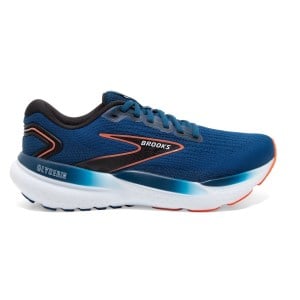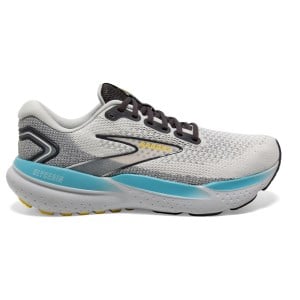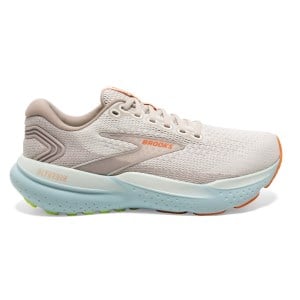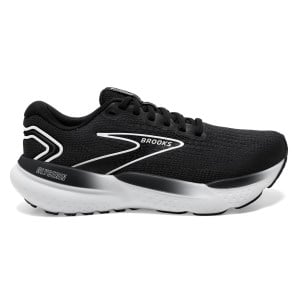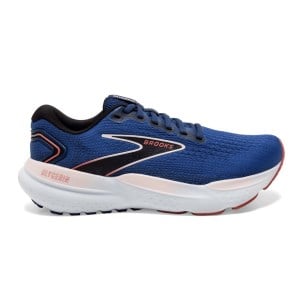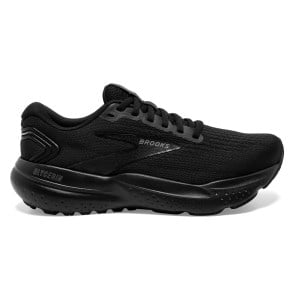Brooks Glycerin 21 vs Glycerin 20 Comparison Running Shoe Review
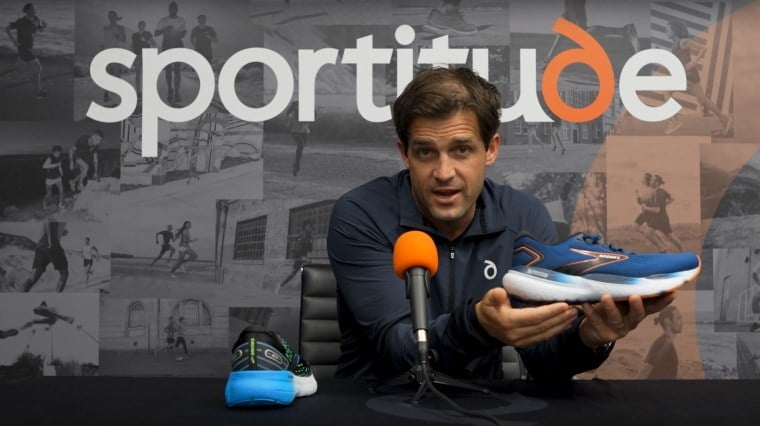
The main difference between the Brooks Glycerin 21 running shoes and the Brooks Glycerin 20 running shoes is that the Brooks Glycerin 21 has been boosted with an extra 2mm of DNA Loft v3 cushioning. This creates a more effortless-feeling ride and out-of-the-box comfort.
As Sportitude shoe expert Josh Willoughby explains in his Brooks Glycerin 21 review, it’s at home during long, easy sessions on the road, with the resilient midsole providing an energy-saving design. This engineering reduces your fatigue as you clock up the kilometres.
The well-thought-out RoadTack rubber outsole offers a broader platform to stabilise the increased stack height of this running shoe. A tweak in the flex groove placement helps the shoe adapt to impact stresses, complementing the compression of the midsole.
The upper is relatively consistent to the engineering and feel of the previous model, but with a trade in materials from air mesh technology to a new warp knit upper. A slightly more voluminous fit in the toe box allows your feet to splay naturally.
If you’re seeking a neutral ride that’s cushioned with a short wear-in period, recycled materials and easy-to-fit width options, the Brooks Glycerin 21 may be the running shoe for you.
-
Brooks Glycerin 21 - Mens Running Shoes
-
Brooks Glycerin 21 - Mens Running Shoes
-
Brooks Glycerin 21 - Womens Running Shoes
Check out the review with full transcript below.
Hey, Josh here from Sportitude. Today is shoe review time and we're going to be talking all things Brooks Glycerin 21 and comparing it to the Brooks Glycerin 20. It’s a very popular shoe that comes with high expectations for those that have used this franchise over the years.
It's a high mileage cushion shoe that's targeting that neutral runner. We've seen advancements with this running shoe over the years going from a BioMoGo midsole right through to what we have in front of us today, being the nitrogen-infused DNA Loft v3 cushioning system. Like all our running shoe reviews, we’ll cover the outsole, talk about the midsole and discuss the upper.
We’ll share with you all the significant changes that Brooks have made in this new model and give you all the information at home to maybe make this your next shoe purchase. Without further ado, let's get stuck in.
Who Is The Brooks Glycerin 21 Running Shoes For?
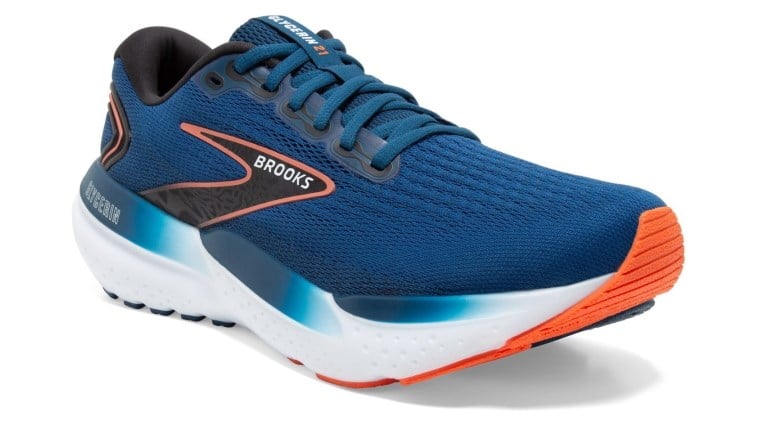
Before we jump into the nitty-gritty details on engineering, let’s discuss who the Brooks Glycerin 21 is targeting. It’s for someone who's looking for ultimate cushioning underneath the body, who's spending plenty of time out on the road.
If you happen to be that person that wants one shoe that's going to be really cushioned and provide plenty of comfort and you’re a neutral foot type, we'd be talking all things Brooks Glycerin 21.
It's a great shoe for that person who has a shoe rotation going at the current time and is looking for that long distance mileage shoe that's going to cover off those long, easy Ks out on the road.
Just addressing the neutral discussion, a neutral runner comes down on entry and as they transition through the midstance phase, we don't see too much of a tendency to favour that medial side.
If you're a runner that does favour the medial side as an overpronator, the Brooks Glycerin GTS 21 is the model you should be considering.
However, there is a small percentage of runners who happen to overpronate and prefer running in neutral shoes. I am one of those runners and the Brooks Glycerin franchise for me is an absolutely great choice. I'd prefer that over the Brooks Glycerin GTS personally.
Outsole
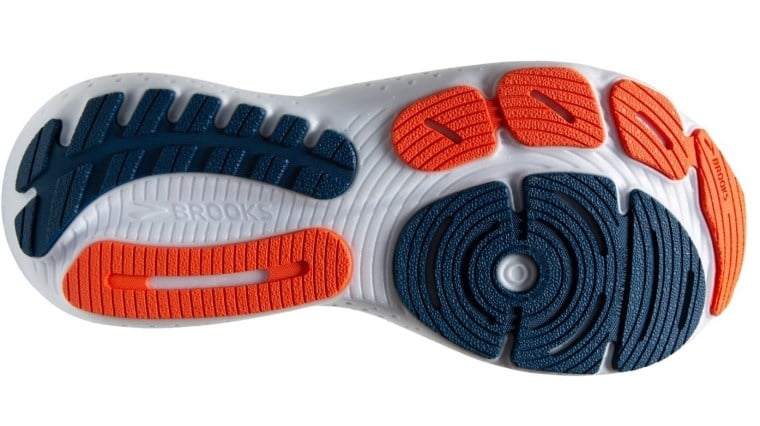
With the new Brooks Glycerin 21 and the Brooks Glycerin 20, there's not a lot of change with regards to the overall coverage of the outsole.
The Brooks Glycerin 21 is marginally wider regarding the overall platform. It’s not a significant change, but the width of the base of the running shoe has been increased due to the change in stack height.
The biggest change for me is that they have used less rubber overall with reference to the total surface area. Both running shoes are going to mainly cater for that heel striker.
We have that high performance rubber on that lateral side which is a different compound to the rest of the rubber which is slightly lighter and softer. You want that higher abrasive wearing area to have great resilience and coverage for that entry point for your heel strikers.
Nothing really has changed with reference to the Brooks Glycerin 20, however it does come around to more of a centralised entry point and that's probably going to be better for walkers to be absolutely honest. In terms of running performance, I would say the outsole or entry point on the new Brooks Glycerin 21 has been better executed.
There is a couple of slits of flex grooves that come into play as well. That'll aid in the overall compression of the midsole on entry, so it almost conforms to how hard you hit the ground and adapts to the surface you're running on. There's a little bit more thought put into the outsole of the new Brooks Glycerin 21.
The nitrogen ‘window’ for want of a better term is further down the midfoot region of the outsole in the Brooks Glycerin 20 to provide a bit of compression through midstance. I don't think it had a huge performance benefit to be honest, but Brooks have transitioned it further up in the Brooks Glycerin 21, just sitting before that first metatarsal joint. Again, it's not going to offer any additional performance in my opinion.
With the flex grooves change, there's a little bit more effort that has gone to making the forefoot more flexible in the Brooks Glycerin 21. The horizontal flex grooves are called out ever so slightly more in the Brooks Glycerin 21 versus the 20.
In the Brooks Glycerin 20, the flex grooves are more on that lateral side of the forefoot with a vertical decoupled line. The execution of the outsole is more to do with the changes in the midsole.
Upper
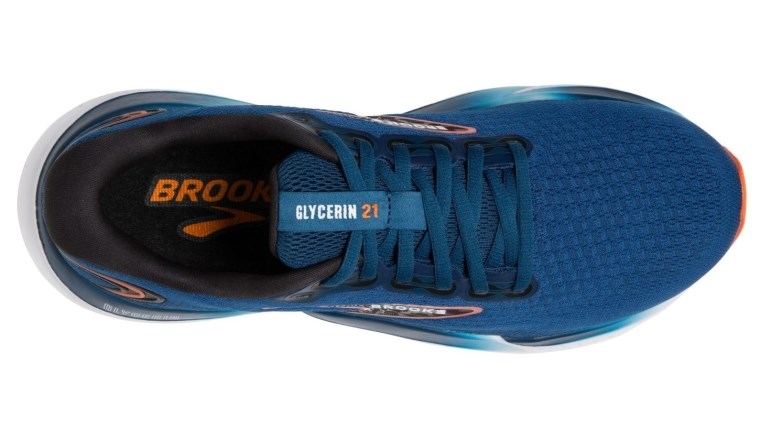
Now, to quickly touch on the upper because we won't spend too much time here since it hasn't been a significant change. Last year we had the air mesh technology on play with the Brooks Glycerin 20. In the Brooks Glycerin 21 we have a new warp knit upper.
To be completely honest with you, there's not a huge change with regards to the execution of the upper. They both feel almost identical. If anything, I find that the toe box of the new Brooks Glycerin 21 to be slightly deeper.
The platform and width across your first to your fifth metatarsal is almost identical. It's the volume that I find to be a little bit roomier inside the new Brooks Glycerin 21.
The tongue is not gusseted. I always find it strange when brands don't gusset their tongues because with a gusseted tongue you get a slightly better lockdown through the arch.
However, if you spend the time and due diligence with your laces with these lacing tips, you should get the appropriate lockdown with your running shoes. Again, it's just personal preference. I prefer a gusseted tongue, but obviously a lot of runners out there potentially don't so it's absolutely fine. Just spend the time and get your lockdown right with the laces.
The internal heel counter looks lower in overall height in the Brooks Glycerin 21, however it is the same height as the previous model. It's just the walls on the new midsole wrap up a little bit higher around the back of that heel counter, so it is a bit of an optical illusion.
With regards to the collar, there is a little bit more padding in the Brooks Glycerin 21 and that's that memory foam they insert into this heel collar. It’s the same silky, soft, very comfortable lining that has been used with the Brooks Glycerin 21 as what it was in the Brooks Glycerin 20.
That first step in comfort around the back of your heel is so comfortable with Brooks running shoes. I'm yet to find a Brooks running shoe that I don't like the execution of the upper. It’s nothing different here with the Brooks Glycerin 21.
Brooks will be manufacturing their StealthFit models and that is the same as what they did last year. They use the same platform in their performance Brooks Glycerin and they just provide a knitted construction on top.
If you're a runner I would always opt for the standard Brooks Glycerin 21 or the Brooks Glycerin 20 as the StealthFit is a little bit more of a casual play. It’s a high performance midsole, but more of a casual upper.
The other thing to note is that the Brooks Glycerin 21, just like the Brooks Glycerin 20 has two widths available in the men's and women’s model. You have your standard widths and then there is a broader option available. The StealthFit only comes in one width, which happens to be standard.
Midsole
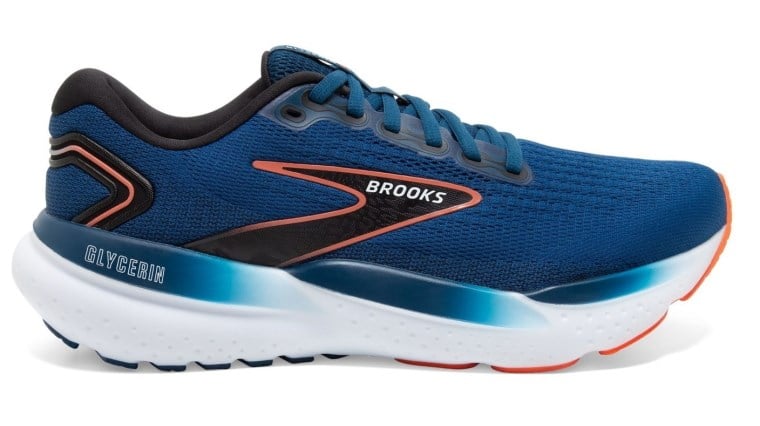
Jumping to the midsole part of today's review, before we talk about the fit, feel and function let's just discuss the statistics first. The Brooks Glycerin 21 has a 10mm offset, nothing has changed there.
Last year we had 26mm in the heel and 16mm in the forefoot in the Brooks Glycerin 20. This year we have a 28mm heel and 18mm forefoot, so Brooks have bumped up this midsole by 2mm, increasing the stack height.
Making this shoe broader underneath at the outsole and increasing the stack height is going to make this running shoe more stable and more cushioned. It’s still using the same execution of midsole technology. That's DNA Loft v3 and it is the exact same compound.
Sometimes brands will use the same midsole and put the same badge on it, but there is different fits and feel. With regards to this midsole, it is the same compound but it runs differently because it's on a slightly broader platform and higher stack.
Just touching on a couple of key feature changes. The midsole of the Brooks Glycerin 21 is executed on more of a convex shape with regards to the heel on the lateral side, in comparison to last year where it was more concave with its construction.
The compression was more in and around the decoupled line which runs on the lateral side of the Brooks Glycerin 20. However, this year that decoupled line comes a little bit closer towards the foot, offering more of that convex set-up underneath which is going to help store the energy that gets absorbed in this DNA Loft v3 midsole. This will then aid in a smoother transition through midstance which in theory and practically creates a slightly more responsive toe-off as well.
When we're talking about energy loss within midsoles, you never have a one for one ratio where you capture the same amount of energy that comes through the shoe as you do when you release. It's more about what percentage of energy are we losing.
With this nitrogen-infused midsole, the DNA Loft v3 is reducing energy wastage - retaining as much of that energy as you possibly can. That's why it doesn't feel as squishy and soft on your foot.
It is a more resilient foam, designed to go for more kilometres and that's certainly been the case with Brooks for a number of years. It is one of their biggest points of difference. They make arguably some of the most durable running shoes in the market and it's more around the execution and performance of the midoles. It's exactly the same with the Brooks Glycerin 21.
I want to touch on the overall fit and feel as well. For me, the cushioning while it isn't the squishiest shoe on the market, does feel soft straight out-the-box in comparison to the Brooks Glycerin 20. You have to put in a few runs in the Brooks Glycerin 20 to get them to adjust and you to acclimatise to that new padding, whereas the Brooks Glycerin 21 was really comfortable and consistent straight out-of-the-box.
That's a credit to Brooks. While a few more runs in the Brooks Glycerin 20 are needed to soften that midsole up, it's still consistent like the Brooks Glycerin 21.
Weight
Let's summarise the Brooks Glycerin 21, but before we do let's talk about the weight. It has gone up ever so slightly.
We have 283 grams for a men's size US 9 in comparison to last year which was 266 grams. In the women’s model it's 258 grams in size US 7.5 compared to 238 grams last year.
There is an increase in overall weight, but that's to be expected. The midsole has gone up in stack height and the platform is marginally broader, so there is more overall materials in this running shoe.
It doesn't run heavy, it's still significantly less than that 300 gram benchmark in that high mileage cushion category. It still feels light, it still performs light, it's just a slightly heavier shoe than last year. However, you should get more kilometres out of the Brooks Glycerin 21 in overall mileage which is a positive.
Pros & Cons Of The Brooks Glycerin 21 Running Shoes
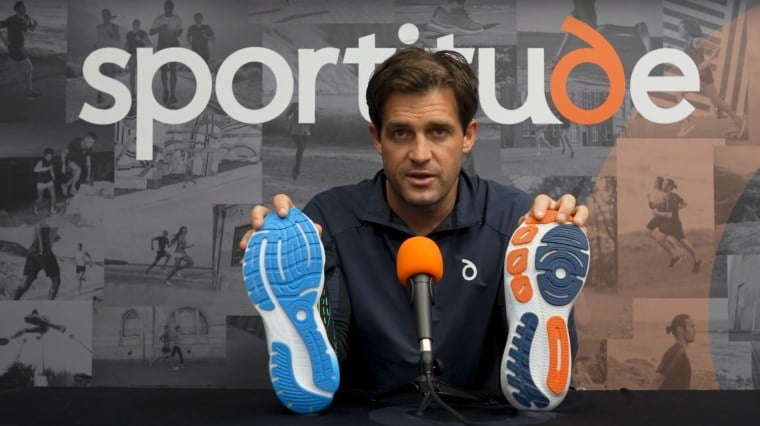
Jumping to the summary of the Brooks Glycerin 21, let's talk about the likes and dislikes across some of the key features of this shoe.
Upper
For me, first things first, the lack of gusseted tongue. It wasn't in the Brooks Glycerin 20 and it's not in the Brooks Glycerin 21. I would love to see Brooks put it in.
The overall comfort of this shoe though is plush and premium, with a slightly deeper toe box and a wider platform which gives a little bit more wriggle room through the front half. Like all Brooks shoes, they execute that heel collar better than anyone. It’s a very comfortable first step in.
Midsole
Moving to the midsole, no surprises, I love the increased stack height. Going up 2mm doesn't seem like much, however it provides a slightly plusher feel on first entry. You don't have to necessarily wear-in this shoe which was the case with the previous model, the Brooks Glycerin 20.
A few Ks into the Brooks Glycerin 21 and it softened up nicely. It feels fresh and ready to go straight out-of-the-box.
The only criticism which is more of a compromise is that the stack height has gone up, but it just adds a little bit of weight. It's unavoidable, but if you had to keep the weight down by executing the same outcome there would have been too many sacrifices made, potentially in the upper. The upper is so important to keep the foot on top of the platform.
I don't think they could have changed too much with the midsole by reducing the weight. I'd rather take the extra stack height and sacrifice the additional weight.
Outsole
Last but not least, the outsole. Visibly there is less outsole on offer. Will that make the shoe less durable? I don't think so.
I think they needed to keep the weight down in this area. They obviously addressed those high abrasive areas which is where they put that high performance rubber in the back lateral side of the heel.
In last year's Brooks Glycerin 20, we had a little bit more coverage in the overall outsole. Making the outsole a little bit lighter at the bottom in the Brooks Glycerin 21 is absolutely fine.
The durability is going to come in the midsole technology which is that nitrogen-infused foam. It is a durable foam and therefore, you can sacrifice a little bit of outsole coverage with regards to performance in that part of the running shoe.
The Wrap Up
There you have it , that is my quick wrap on the Brooks Glycerin 21. If you've been using your Asics Gel Nimbus franchise, your Mizuno Wave Sky or your Nike Air Zoom Vomero just to name a few, you could be considering the Brooks Glycerin 21.
It’s a very consistent model and very consistent brand. Brooks have established themselves as an absolute contender globally with what they produce in the running shoe market and the Brooks Glycerin 21 is a testament to the ingenuity of the engineers at Brooks. The midsole is high performing, very resilient, soft and plush. I like what they have done.
If you have any questions about the Brooks Glycerin 21, please contact our Sportitude shoe experts. If you have been a Brooks Glycerin 20 wearer, let us know what you liked and disliked about that running shoe. Maybe we have a similar feeling on how this shoe performed.
I hope that the Brooks Glycerin 21 will meet all of your expectations as I believe it will.
Please subscribe to the Sportitude YouTube channel if you haven't already done so to stay notified and we'll keep doing these shoe reviews for you the running community all over the world.
Until next time stay safe, be kind to one another, happy running and we'll see you out on the road. Take care.
FEATURES
- Use: Daily Trainer / Mileage
- Foot Type: Neutral
- Upper: Knit
- Midsole: Brooks DNA Loft v3
- Heel Height: 28mm
- Forefoot Height: 18mm
- Offset / Drop: 10mm
- Sustainability: Recycled materials
- Similar Shoes: Mizuno Wave Sky, Asics Gel Nimbus & Nike Air Zoom Vomero
Men
- Weight: 283g / 10oz (US 9)
- Width: D (standard), 2E (wide)
Women
- Weight: 258g / 9.1oz (US 7.5)
- Width: B (standard), D (wide)
Brooks Glycerin 20
-
Brooks Glycerin 21 - Mens Running Shoes
-
Brooks Glycerin 21 - Mens Running Shoes
-
Brooks Glycerin 21 - Mens Running Shoes
-
Brooks Glycerin 21 - Womens Running Shoes
-
Brooks Glycerin 21 - Womens Running Shoes
-
Brooks Glycerin 21 - Womens Running Shoes
For a more in-depth shoe fitting experience, you can book a free 15 minute video chat in a Live Fit session or make an appointment to discover your RunDNA at Sportitude Running@Hindmarsh.
Book your RunDNA assessment today!
Follow Sportitude Running at:
Instagram: sportitude.running
If you liked this, you'll love:
What Type Of Running Shoe Is Best For Me?
Running Shoe Guide 1: What To Do When Your Running Shoes Arrive
Running Shoe Guide 2: How To Break In Your New Running Shoes
Running Shoe Guide 3: How To Clean And Care For Your New Running Shoes

